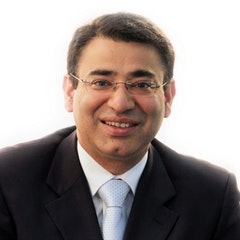FROM THE ARCHIVES: A VINTAGE CARRIER MANAGEMENT ARTICLE FROM 2017.
“The property/casualty insurance industry will look very different in the next 10 years than it has in the last 30.”
The prediction, delivered by Standard & Poor’s Director Tracey Dolin-Benguigui at an S&P conference earlier this year, may not seem extraordinary. In fact, assuming that most industry leaders would agree, Carrier Management recently surveyed more than two dozen to ask the obvious follow-up question: How?
More specifically, we asked:
What major changes do you see on the horizon for the property/casualty insurance industry in the next 10 years? What will insurance companies, insurance leaders, the industry and its workforce look like in the next decade? What risks will they insure? How will insurance products and services be distributed?
 Nine InsurTech leaders, five traditional carrier CEOs, six more P/C carrier executives and another half-dozen experts with ties to the insurance industry (service providers, investors and legal advisers) responded, sharing their visions of what’s on the horizon between 2017 and 2027. Below we have published quotes from each of the executives of incumbents and founders of InsurTechs and the rest of the respondents without identifying who said what.
Nine InsurTech leaders, five traditional carrier CEOs, six more P/C carrier executives and another half-dozen experts with ties to the insurance industry (service providers, investors and legal advisers) responded, sharing their visions of what’s on the horizon between 2017 and 2027. Below we have published quotes from each of the executives of incumbents and founders of InsurTechs and the rest of the respondents without identifying who said what.
Which responses came from the startups and which ones from the veterans in the insurance game?
Click the quote icon on the left side of each quote to find out and to reveal the complete responses of each respondent. Below the quotes, we have provided a list of all the respondents with direct links to their full responses.
In a decade, our venerable, well-established carriers with legacy systems and cultures—if they manage to survive—will be anachronistic.
Insurance companies are resilient, and they can continue to be resilient if they move quickly and decisively.
We believe the new entrants looking to disintermediate brokers and agents often underestimate the difficulty of customer acquisition and the value of advice.
We are on the tail end of insurance companies going “digital.”
If you could wake up an underwriter or broker from 1686, it would take only a few days to get them up to speed.
Digitally interconnected operations represent the most comprehensive, agile, innovative, creative and emotionally connected way of conducting business.
Smart contracts and reinsurance go together like peanut butter and jelly. If this doesn’t exist in 10 years, I will be shocked, and if it doesn’t exist in three years, albeit with limited adoption, I will be mildly surprised.
The power of technology to drive change and disrupt traditional industry models will continue to have a paradoxical effect on the industry. It will give us more tools to collect and analyze data to price certain risks, but it will also accelerate the pace of change and give rise to unknown risks.
As the insurance industry ramps up its use of big data, it will likely lead to disaggregation of the industry.
Success in this environment demands perpetual innovation and the ability to reimagine the world of risk. Yet, this must come at a time when many in our industry are saddled with business models that haven’t changed much in the last 200 years.
No one company will “win” insurance. Distribution and customer experience will be headlined by technology, but the category standouts will back up tech with human touch and expertise in elegant and efficient ways.
Workers compensation will evolve and become largely about proactive workplace safety rather than paying for losses post-accident.
Digitization and automation alone are not the keys to success. What really matters is how we connect with our customers and gain a clear understanding of their needs. Our strategic focus is on the customer.
Falling IoT costs and a growing dataset will position insurers to champion loss prevention and risk mitigation for a much broader customer base under a “prevention as a service” umbrella.
In the future, even more informed and personalized ways to underwrite risk will emerge.
Going forward, automation will invade the insurance industry, with bots taking over many customer-service functions, handling simple underwriting inspections and empowering more self-service claims.
Niches within the industry will become even more focused as analytics allow the industry to “slice and dice” into micro-segments.
The insurance system today is built on agents, actuaries and underwriters, who will be replaced with simple-to-use online interfaces, algorithms and artificial intelligence.
D2C will certainly gain more market share as well, but predominately, I think insurance will remain too regulated and too geographically fragmented to completely drop a broker or agent.
I could see a day where the industry is insuring and protecting individuals and their lifestyle with no gaps, no overlap and one premium.
The diverse and embedded infrastructure for selling insurance is tougher to disrupt than most people think.
What we expect to see in the coming years is a continuation of what happened in travel—with the majority of relatively simple customer scenarios moving to a few online players
By using new collection methods, such as drones and sensors—information sources not previously available—businesses will be able to carry policies based on more accurate usage [of connected devices] rather than traditional annual or multiyear policies.
Look for continued expansion in the startup space, but I anticipate some consolidation before the next wave of entrepreneurs emerges with higher levels of both expertise and experience.
This is just the beginning, as many new insurance products will be created with technology and data acting as enablers.
Cloud technologies will be of greater focus as companies look to enable greater efficiency and business agility.
Click on each executive to read their full responses.
 Mike Albert, Co-Founder, Ask Kodiak
Mike Albert, Co-Founder, Ask Kodiak Tim Attia, CEO and Co-Founder, Slice Labs, Inc.
Tim Attia, CEO and Co-Founder, Slice Labs, Inc. Arun Balakrishnan, CEO, Xceedance
Arun Balakrishnan, CEO, Xceedance Ilya Bodner, CEO, Bold Penguin
Ilya Bodner, CEO, Bold Penguin Bobby Bowden, Executive Vice President, Chief Distribution and Marketing Officer, Allied World
Bobby Bowden, Executive Vice President, Chief Distribution and Marketing Officer, Allied World Andy Breen, Senior Vice President, Digital, Argo Group
Andy Breen, Senior Vice President, Digital, Argo Group Adam Cassady, CEO, Tyche Risk
Adam Cassady, CEO, Tyche Risk Chris Cheatham, CEO, RiskGenius
Chris Cheatham, CEO, RiskGenius Trent Cooksley, Head of Open Innovation, Markel Corporation
Trent Cooksley, Head of Open Innovation, Markel Corporation Mike Foley, CEO, Zurich North America
Mike Foley, CEO, Zurich North America Guy Goldstein, Co-Founder and CEO, Next Insurance
Guy Goldstein, Co-Founder and CEO, Next Insurance Mike Greene, CEO & Co-Founder, Hi Marley
Mike Greene, CEO & Co-Founder, Hi Marley Brian Hemesath, Managing Director, Global Insurance Accelerator
Brian Hemesath, Managing Director, Global Insurance Accelerator Russell Johnston, CEO, QBE North America
Russell Johnston, CEO, QBE North America Dr. Henna Karna, Managing Director and Chief Data Officer, XL Catlin
Dr. Henna Karna, Managing Director and Chief Data Officer, XL Catlin Tony Kuczinski, President and CEO of Munich Re, US
Tony Kuczinski, President and CEO of Munich Re, US Rashmi Melgiri, Co-Founder, CoverWallet
Rashmi Melgiri, Co-Founder, CoverWallet David W. Miles, Co-Founder and Managing Partner, ManchesterStory Group
David W. Miles, Co-Founder and Managing Partner, ManchesterStory Group Pranav Pasricha, CEO, Intellect SEEC
Pranav Pasricha, CEO, Intellect SEEC Mike Pritula, President, RMS
Mike Pritula, President, RMS Kathleen Reardon, CEO, Hamilton Re
Kathleen Reardon, CEO, Hamilton Re Jeff Richardson, Senior Vice President, OneBeacon Insurance Group
Jeff Richardson, Senior Vice President, OneBeacon Insurance Group Vikram Sidhu, Partner, Clyde & Co
Vikram Sidhu, Partner, Clyde & Co Christopher Swift, CEO, The Hartford
Christopher Swift, CEO, The Hartford Rebecca Wheeling Purcell, Schedule It
Rebecca Wheeling Purcell, Schedule It Keith Wolfe, President US P/C—Regional and National, Swiss Re
Keith Wolfe, President US P/C—Regional and National, Swiss Re

Get the responses of all 26 leaders neatly packaged in single PDF download. More than 43 pages of content.





















 Hawaii Islands Sinking Faster in Some Areas, Increasing Flood Risk
Hawaii Islands Sinking Faster in Some Areas, Increasing Flood Risk  Gen AI Is Shaking Up Underwriting, But Can It Replace Human Judgment?
Gen AI Is Shaking Up Underwriting, But Can It Replace Human Judgment?  Data Insight: Who’s Growing in Personal Lines?
Data Insight: Who’s Growing in Personal Lines?  Progressive: Policies Grow Faster Than Workforce
Progressive: Policies Grow Faster Than Workforce 







